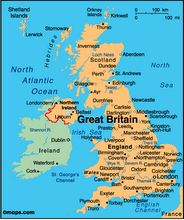Megan had the opportunity to visit Hampton Court a couple of weeks ago with her parents and some of their friends. We've finally managed to upload some photos of the Palace and its costumed guides. It was originally owned by Cardinal Wolsey but it got pinched by Henry VIII in 1525 when he decided he'd quite like it. We had an interesting time imagining Tudor life in the Palace - it added a bit of factual information to the stuff I have otherwise "learnt" from reading Phillippa Gregory...
We got our money's worth in the hedge maze in the gardens - I'm sure you're not supposed to get quite that lost in a maze the size of a large conference room! A highlight of the day was meeting Dennis's leprecaun and kiwi toys that he is photographing in various tourist poses on his trip - similar to our travels with Bear. Dennis is sending his photos back to his school kids to enjoy, not sure we have quite such a good excuse.
Arsenal
On Tuesday 25th September, we were back at Emirates Stadium to watch Arsenal play Newcastle in the 3rd round of the Carling Cup. Despite it being a Carling Cup match (meaning it was effectively a second string Arsenal side) and a cold Tuesday night, it was another sell-out of 60,000 at Emirates Stadium. Arsenal continued its brilliant start to the season with a comfortable 2-0 win to progress to the 4th round.
Parliament Buildings
On Friday 28 September, Tim enjoyed a tour of the Houses of Parliament. For two months each year (the Summer Opening of Parliament) the public can wander through the New Palace of Westminster, as it is officially known. The New Palace contains Britain's two Houses of Parliament, the House of Lords and the House of Commons. Around 900 years ago, Edward the Confessor established the medieval building now known as the Old Palace of Westminster (close to Westminster Abbey), which was both a meeting place of parliaments and the principal residence of the kings of England until 1532. The Old Palace burned to the ground in 1834 and during the next 40-odd years, the New Palace was carefully planned and built on the same site specifically for its purpose.
The tour follows the same route that the Queen takes when she arrives for the State Opening of Parliament in November each year. We entered the building through the Sovereign entrance at the bottom of the Victoria Tower (not by horse-drawn carriage as Her Majesty does) and walked up the Royal Staircase to the Norman Porch and then into the Queen's Robing Room. This is a beautiful room with enormous paintings all around the walls, including portraits of Queen Victoria and Prince Albert, gilded statues, wooden carvings of King Arthur and the Chair of State. In this room, the Queen is dressed in her robe and puts on her Imperial State Crown, brought especially from the Tower of London for the ceremony. The Queen then walks through the Royal Gallery (used for parliamentary ceremonies, including meeting foreign statesmen) and the Prince's Chamber (also full of beautiful statues, paintings, etc) and into the House of Lords, where she is seated in her throne and addresses members of the House of Lords and the House of Commons, about what Parliament aims to achieve in the coming year. Interestingly, the Queen is only allowed as far as the House of Lords, but not further down the corridors of the building to the House of Commons. This is to emphasise that the Queen has no undue influence over the democratically-elected House of Commons.
There is a clear difference between the interior design in the House of Lords and the House of Commons. The Lords enjoy beautiful paintings, stained glass windows and red velvet seats. The dominant colour is gold. In the House of Commons, plain wooden walls, green vinyl seats, dull colours and no gold to be seen. Also, there is only room for 437 members of the House of Commons to be seated at any one time, despite there being 646 members of the House! In the central lobby, there are larger than life-size statues of some of Britain's most famous prime ministers, including Sir Winston Churchill and Margaret Thatcher.
The last stop of the tour was Westminster Hall, the huge hall of the medieval palace that largely survived the 1834 fire and was retained as part of the New Palace. Westminster Hall has witnessed some famous events in British history, from coronation banquets to monarchs (and the Queen Mother and Winston Churchill) lying in state. It was also the venue for the trial and condemnation to death of William Wallace in 1305, Guy Fawkes in 1606 and Charles I in 1649. From Westminster Hall, we exited the buildings into the New Palace Yard, under the huge clock tower, which has housed Big Ben since 1859.

Hampton
Court

David and
Carol with
their friends
King Richard I
"The Lionheart"
Parliament
Westminster
Hall
Big Ben
looking fine









No comments:
Post a Comment